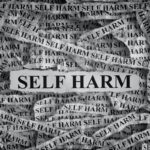
Chris Fielding summarises a Welsh cohort study which finds that neurodevelopmental and mental disorders are linked to school absenteeism and exclusion.
[read the full story...]
Chris Fielding summarises a Welsh cohort study which finds that neurodevelopmental and mental disorders are linked to school absenteeism and exclusion.
[read the full story...]
Natalie Kashirsky summarises a qualitative study finding that young people think “smartphone apps are cool”, but possibly unhelpful for coping with self-harm.
[read the full story...]
Piumee Bandara summarises a cross-sectional study which finds that people who had experienced lifetime intimate partner violence (IPV) were almost three times more likely to have made a suicide attempt in the past year, compared to people without experience of IPV.
[read the full story...]
In her debut blog, Mirabel Pelton summarises a systematic review finding that autistic people are at 3-fold greater risk of self-harm compared to non-autistic people.
[read the full story...]
In her debut blog, Carolina Guzman Holst reviews a recent cross-sectional study exploring the role of loneliness in relation to self-injurious thoughts and behaviour in the context of the Integrated Motivational Volitional (IMV) model of suicidal behaviour.
[read the full story...]
Charlotte Huggett reviews a recent Canadian population-based cohort study, which examines rates of suicide and self-harm in adult survivors of critical illness.
[read the full story...]
Millie Witcher and Sarah Rowe appraise a randomised controlled trial on the effect of low-intensity treatments for self-harm among people with suicidal ideation, which has some important findings.
[read the full story...]
Holly Crudgington looks at a systematic review exploring the links between social media, cyberbullying, suicide and self-harm, which identifies a link between being victimised online and suicidal behaviour, thoughts and self-harm.
[read the full story...]
Yutung Ng reviews a cohort study exploring the links between loneliness, living alone and emotional support with suicidality and self-harm.
[read the full story...]
Amelia Talbot looks at a recent qualitative study of patient and carer perspectives, which explores the reasons why some patients do not receive a psychosocial assessment in emergency departments following self-harm.
[read the full story...]